Wilhelm Kage Antique Gustavsberg Argenta MID Century Modern Lamp Old Ceramic Art
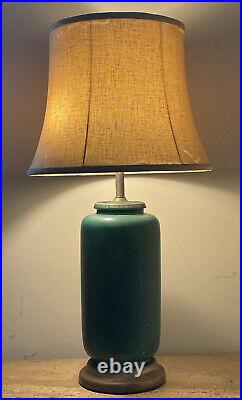
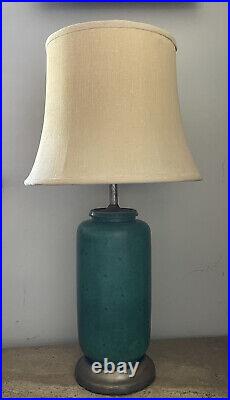
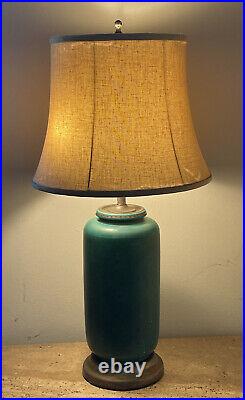
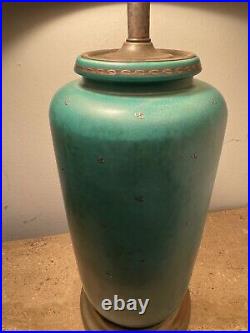
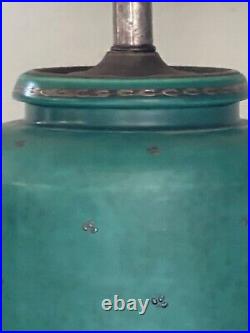
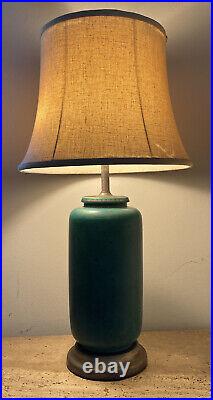
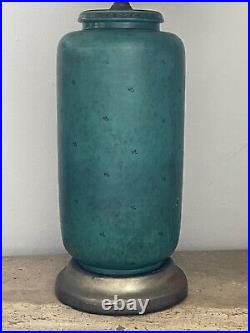
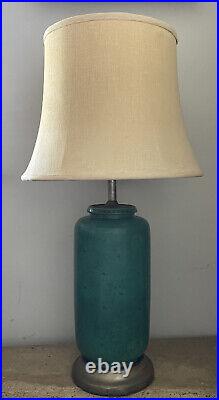
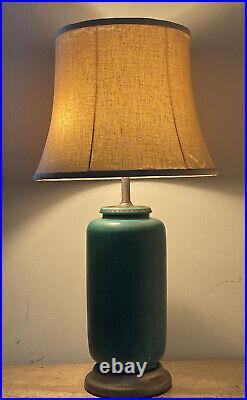
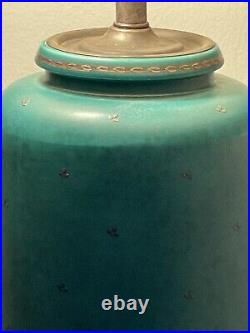
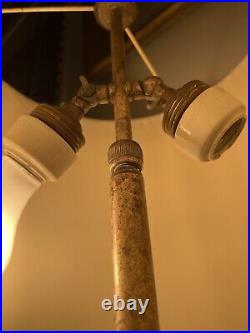
RARE ANTIQUE MID CENTURY MODERN CERAMIC TABLE LAMP BY INTERNATIONALLY KNOWN RENOWNED SCULPTOR WILHELM KAGE. “ARGENTA” SERIES, GUSTAVSBERG’S FIRST DEDICATED ART POTTERY STUDIO IN THE 1930s. KAGE’S “ARGENTA” SERIES ENCOMPASSES A VARIETY OF VESSELS COATED WITH AN OXIDIZED GREEN GLAZE AND DECORATED IN SILVER MOTIFS. THE SHADE IS NOT ORIGINAL TO THE LAMP AND WILL NOT BE INCLUDED IN THE SELL. Wilhelm Kage (1889 – 1960) was active/lived in Sweden. Wilhelm Kage is known for Sculpture. Algot Wilhelm Kåge was a Swedish artist and designer, mainly known as a ceramic designer and as the artistic leader of the Gustavsberg porcelain factory. Born: March 6, 1889, Stockholm, Sweden. Died: November 25, 1960, Stockholm, Sweden. Education: Konstfack – University of Arts, Crafts and Design. Spouse: Jenny Hasselqvist m. Children: Christina Kåge Öhrman. The Gustavsberg porcelain factory was, for many decades, the largest ceramics maker in Sweden and home to some of the most innovative and ingenious makers of the past century. The company, founded in 1825, mass-produced a wide range of products: first decorative household items and tableware in the English style and later bathroom fixtures, including the first pressed-steel bathtubs that would oust heavy cast iron. But of first interest to collectors are the remarkable decorative works created in the Gustavsberg art pottery studio, in particular those by master ceramists Wilhelm Kåge, Berndt Friberg, and Stig Lindberg. Gustavsberg began producing some individually crafted, highly decorated, and richly glazed pieces in the 1860s. While the forms of their mass-produced vessels and plates derived from English, Continental, and Asian styles, a select few painters won acclaim for their personal artistry. Gunnar Wennerberg became known for his work in the organic Art Nouveau style, and Josef Ekberg, the company’s design chief from 1908 to 1917, was revered for his expert use of iridescent lusterware glazes and the sgraffito technique, in which a decorative pattern is incised in the surface of a clay pot before it is glazed and fired. It was not until Ekberg’s successor, Wilhelm Kåge, opened Gustavsberg’s first dedicated art pottery studio that the work became widely recognized. Kåge’s “Argenta” series, which encompasses a variety of vessels coated with an oxidized green glaze and decorated in silver motifs, remains popular. Though perhaps his most striking works are his “Surrea” vases – white bisque porcelain in off-kilter forms inspired by Cubist paintings – and his “Farsta” wares, which include totemic, spindly footed stoneware vases and bowls with textured surfaces, glazed in brown, green and blue. Kåge’s finest protégés, Berndt Friberg and Stig Lindberg, took over from Kåge as Gustavsberg’s design directors in 1945. Friberg was a master potter. He threw elegant, simple, symmetrical vases and bowls painstakingly coated in layer after layer of matte glazing to achieve a classic striated effect known as rabbit’s fur. Lindberg’s highly collectible studio ceramics fall into two principal categories: The first is made of white porcelain pieces in round, biomorphic or stylized natural forms. The second includes weightier vases – many with textured bodies and applied decorations – glazed in deep, earthy colors. As you will see from the works on these pages, Gustavsberg was a bastion of creativity and precise artistry that turned out a remarkable range of works whose style still resonates with lovers of Scandinavian design. This item is in the category “Collectibles\Lamps, Lighting\Lamps”. The seller is “vintagerotty” and is located in this country: US. This item can be shipped to United States, Canada, United Kingdom, Australia, Japan, South Korea, Indonesia, South Africa, Hong Kong, Bahamas, Israel, Mexico, New Zealand, Singapore, Switzerland, Norway, Saudi Arabia, United Arab Emirates, Qatar, Bahrain, Malaysia, Chile, Colombia, Panama, Jamaica, Barbados, Bangladesh, Bermuda, Brunei Darussalam, Bolivia, Egypt, French Guiana, Guernsey, Gibraltar, Guadeloupe, Iceland, Jersey, Jordan, Cambodia, Cayman Islands, Liechtenstein, Sri Lanka, Monaco, Macau, Martinique, Maldives, Nicaragua, Oman, Pakistan, Paraguay, Reunion.
- Light Color: White
- Antique: Yes
- Power Source: Corded
- Occasion: All Occasions
- Size: Large
- Year Manufactured: 1930s
- Vintage: Yes
- Design: Ceramic
- Department: Unisex Adults
- Control Style: Knob Control
- Sensor Type: Light
- Manufacturer: Wilhelm Kage – Gustavsberg Argenta Series
- Style: Modern
- Features: Adjustable
- Finish: Green Ceramic
- Room: Any Room
- Handmade: Yes
- Number of Settings: 2
- Pattern: Argenta
- Color: Green
- Material: Ceramic
- Number of Lights: 2
- Installation Area: Indoor
- Brand: Wilhelm Kage – Gustavsberg Argenta Series
- Mounting: Tabletop
- Type: Table Lamp
- Era: 1930s
- Assembly Required: No
- Cord Color: Brown
- Theme: Art
- Original/Reproduction: Original
- Time Period Manufactured: 1920-1949
- Country/Region of Manufacture: Sweden